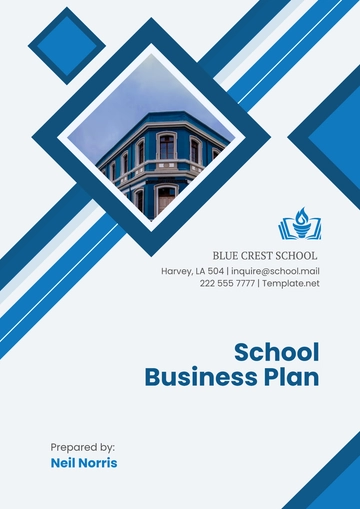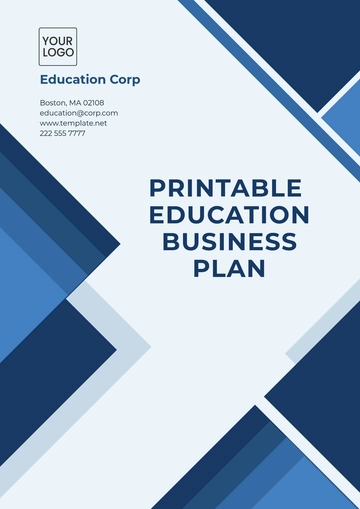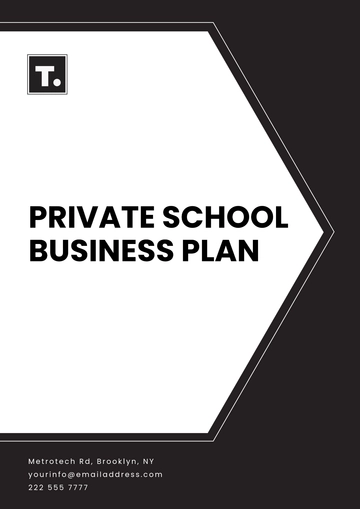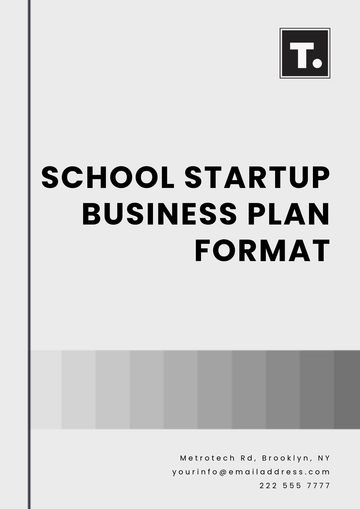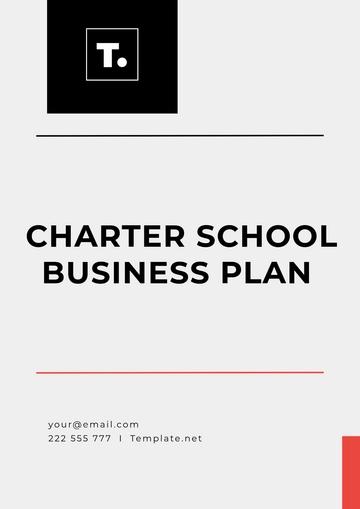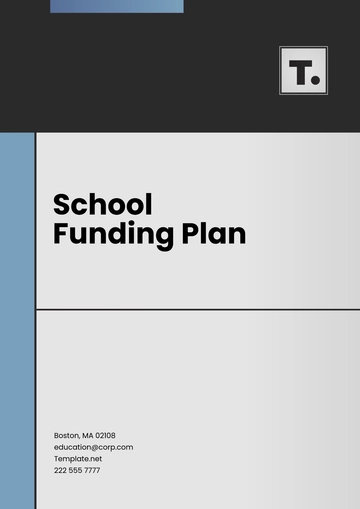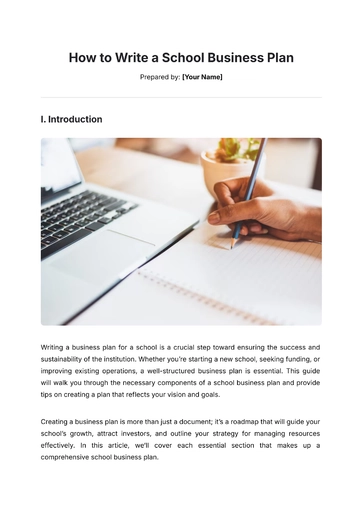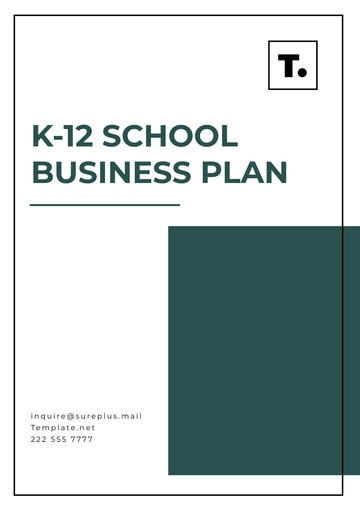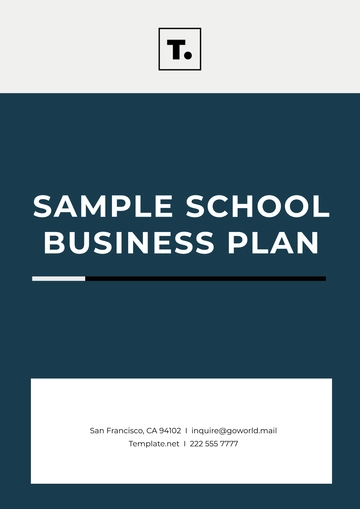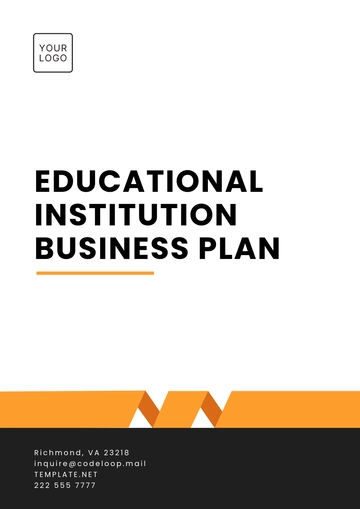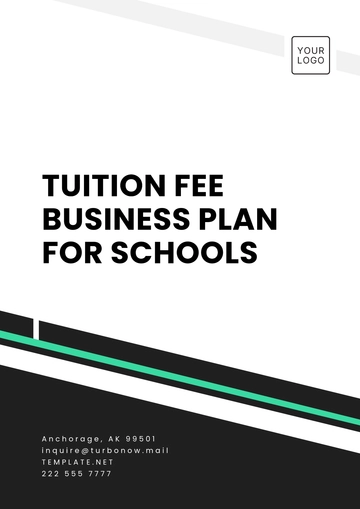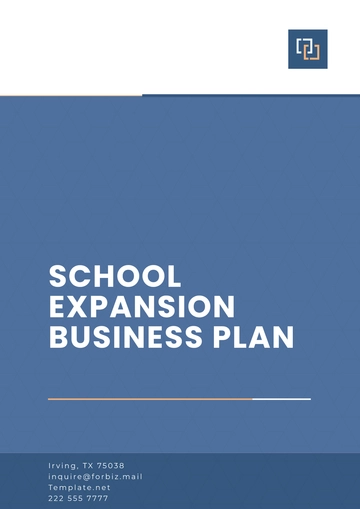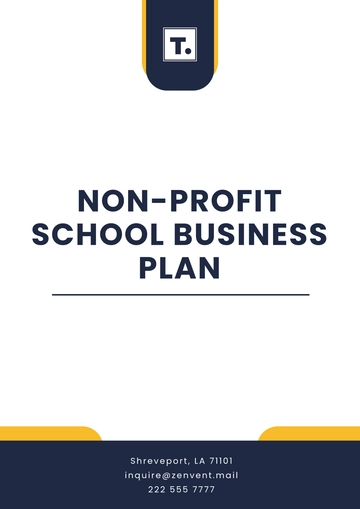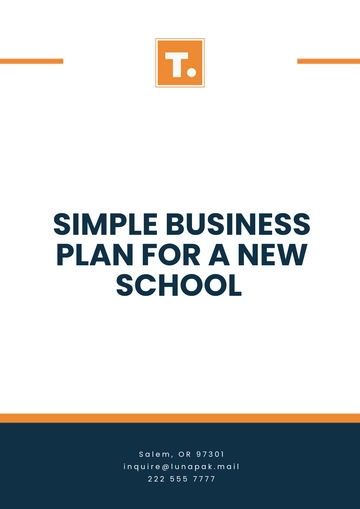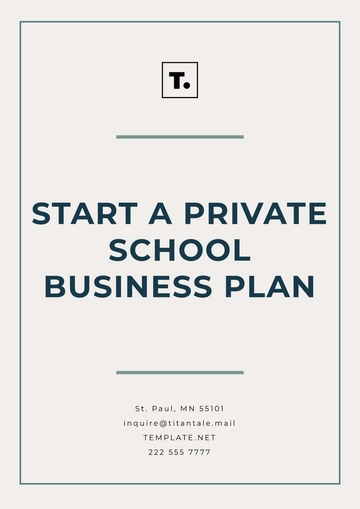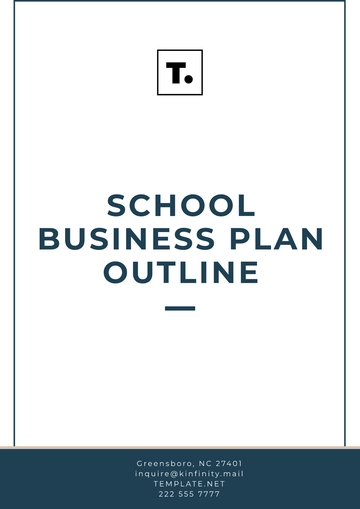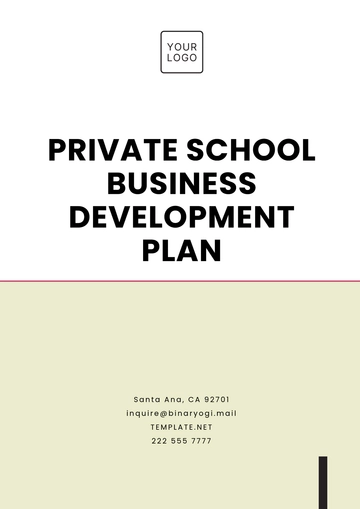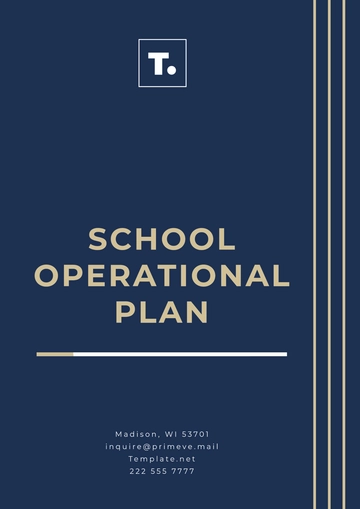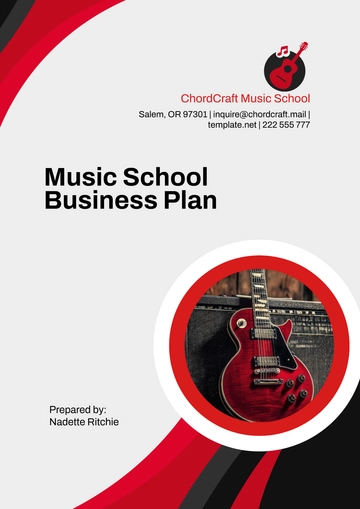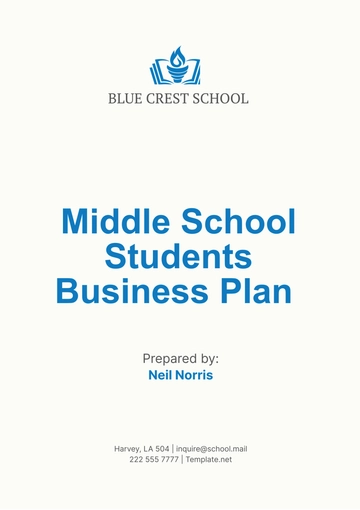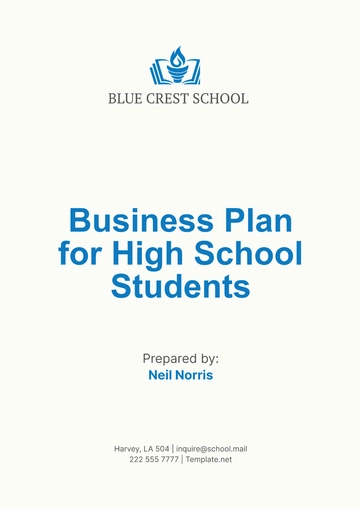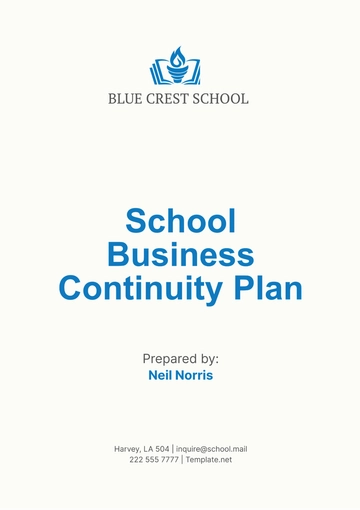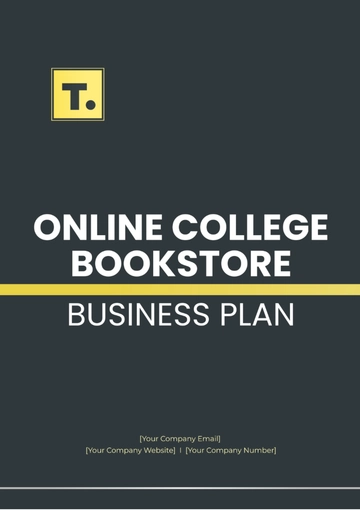Free Music School Business Plan
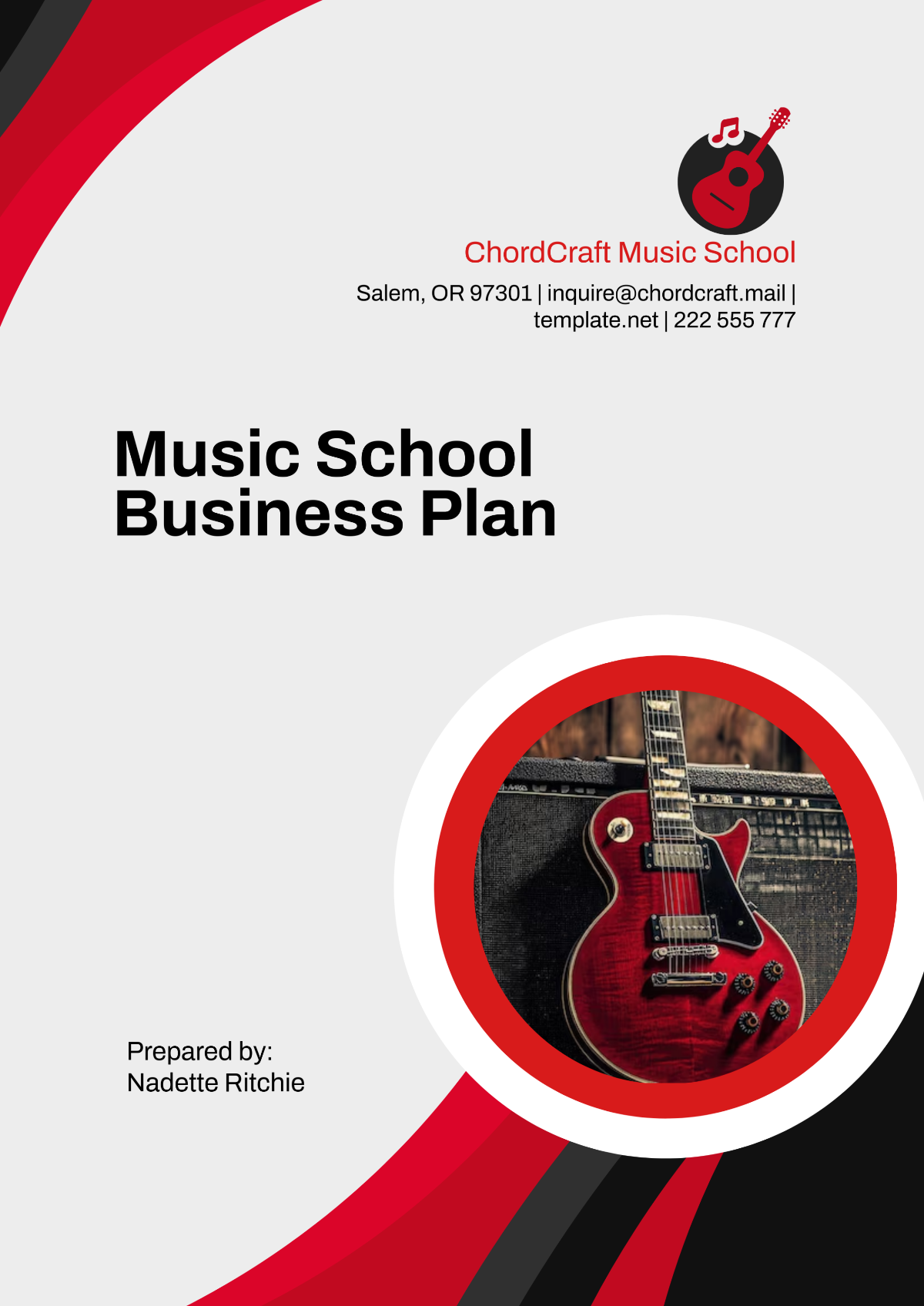
I. Executive Summary
A. Mission Statement
"[Your Company Name] is dedicated to providing high-quality music education for students of all ages and skill levels. Our mission is to inspire creativity, foster musical talent, and cultivate a lifelong love for music through personalized instruction, community engagement, and innovative learning methods."
B. Business Overview
[Your Company Name] is a private music school offering a wide range of music lessons, including private lessons, group classes, and workshops for students in the local area. We provide instruction in piano, guitar, violin, voice, and music theory, as well as online courses for flexibility. Our state-of-the-art facility includes soundproof classrooms and modern instruments, ensuring an optimal learning environment.
C. Vision and Values
Our vision is to become the leading music school in the region, known for producing talented musicians, engaging students in unique music programs, and creating a supportive community for both aspiring and experienced musicians. Our core values are excellence in education, creativity, student-centered learning, and community engagement.
D. Objectives
Short-term Goals
Enroll 100 students within the first year of operations.
Develop and launch an online lesson platform by the end of year one.
Host 5 student recitals within the first 12 months.
Long-term Goals
Expand to two additional locations within 5 years.
Offer a full range of music education certifications.
Achieve a student retention rate of [00]% by year three.
E. Key Success Factors
High-quality, personalized instruction delivered by experienced music educators.
Strategic location near schools and residential neighborhoods.
Strong community ties and partnerships with local schools and music festivals.
II. Company Description
A. Business Structure
[Your Company Name] is a Limited Liability Company (LLC), which allows for flexibility in operations and tax advantages while providing limited liability protection for the owners. The company is equally owned by two founders, [Founder Name A] and [Founder Name B], both of whom have over 10 years of experience in music education and performance.
B. Business Location and Facilities
The academy is located in a 3,000-square-foot facility in downtown [City], with easy access to public transportation and ample parking. The space includes:
6 private lesson rooms
2 group classrooms
A soundproof recording studio
A spacious lobby and waiting area
The facility is fully equipped with modern instruments, including grand pianos, guitars, violins, and percussion equipment.
C. Services Offered
Private Music Lessons | One-on-one lessons in piano, guitar, violin, voice, and music theory. |
Group Classes | Group lessons for beginners and intermediate students, such as group piano, music theory, and band. |
Workshops and Masterclasses | Special programs offered quarterly, including songwriting workshops, music production classes, and guest instructor sessions. |
Online Lessons | Virtual lessons for students who cannot attend in person, including prerecorded lessons and live, interactive sessions. |
Community Events | Regular student recitals, local music festivals, and collaborations with other arts organizations. |
D. History of the School
[Your Company Name] was founded in 2050 by two passionate music educators, [Founder Name A] and [Founder Name B], who recognized the need for a more flexible and accessible approach to music education. After securing a prime location and a team of skilled instructors, the school opened its doors in the spring of 2050.
III. Market Research and Analysis
A. Industry Overview
The global music education market is experiencing steady growth, driven by increasing interest in music lessons across all age groups and the rise of online learning platforms. Music education is now seen as an essential skill that supports cognitive development and emotional well-being. In the United States alone, the private music lessons industry generates over $[00] billion annually.
B. Target Audience
Demographics
Age Groups: Children (5-18), Adults (19-50), Senior learners (50+)
Skill Levels: Beginners, intermediate, and advanced students
Geographic Location: Primarily local residents within a 10-mile radius of [City], with potential online students nationally
Psychographics
Aspiring musicians looking for structured learning
Parents seeking extracurricular activities for their children
Adults interested in learning an instrument as a hobby or enhancing their musical skills
People passionate about arts and music as a form of self-expression
C. Market Needs
Despite the growing demand for music lessons, there is a gap in the market for a school that combines high-quality education with a strong community atmosphere. Many schools focus on either online lessons or in-person, but few offer both, which is a key need in the market. Additionally, there is a rising demand for music theory and production courses.
D. Competitive Analysis
Local Competitors
[Competitor A] (focuses on children’s lessons and group programs)
[Competitor B] (specializes in piano and voice lessons, with limited adult programs)
Competitive Advantage
Our ability to offer both in-person and online lessons gives us flexibility.
We offer a broader range of services, including group classes, workshops, and community events.
Experienced instructors with specialized expertise across multiple instruments.
E. Market Trends and Opportunities
Growing trend of online music education post-pandemic.
Increased interest in adult music education and hobby musicianship.
Potential to expand into corporate partnerships (e.g., offering music education as employee enrichment programs).
IV. Marketing and Sales Strategy
A. Branding and Positioning
[Your Company Name] will position itself as a community-focused, student-centered music school offering personalized instruction in a welcoming and supportive environment. The brand will emphasize creativity, excellence, and inclusive education.
B. Marketing Plan
Online Marketing
Website with detailed course offerings, instructor bios, and a blog on music education
Active social media presence on Instagram, Facebook, and YouTube for student showcases and promotions
Paid Google Ads and SEO optimization to reach new students
Local Marketing
Flyers distributed at local schools, cafes, and libraries
Partnerships with local schools and community centers for after-school programs
Hosting free music events and open houses to engage the community
Content Marketing
Launching an educational YouTube channel with free tutorials and tips
Offering free downloadable resources such as sheet music or practice schedules
Creating an email newsletter with upcoming events, student spotlights, and music tips
Referral Programs
Offering discounts for existing students who refer new students
Implementing a loyalty program that rewards long-term students with free lessons or discounted rates
C. Sales Strategy
Sales Funnel
Awareness: Targeted advertising and partnerships to raise awareness
Consideration: Free trials and introductory lessons for new students
Conversion: Clear pricing plans, flexible payment options, and excellent customer service
Pricing Structure
Private lessons: $[00] per half-hour session
Group classes: $[00] per 8-week session
Online lessons: $[00] per session
Payment Options
Monthly membership (automatic payments)
Pay-per-lesson option
Discounts for multiple lesson purchases or family packages
D. Customer Retention and Relationship Management
Hosting student recitals and community music events to keep students engaged
Offering periodic performance assessments and progress reports to students and parents
Regular surveys to gather feedback and improve the student experience
V. Operations Plan
A. Management Structure
[Your Company Name] will be managed by its founders, [Founder Name A] (CEO) and [Founder Name B] (Director of Education). The team will include:
Instructors: 6 music teachers specializing in various instruments and music theory
Administrative Staff: 2 customer service representatives and a marketing manager
B. Staffing and Recruitment
Teachers will be hired based on their educational background, teaching experience, and passion for music education. Staff recruitment will focus on individuals who align with the school’s values of excellence, creativity, and community.
C. Facility Operations
The facility will operate Monday through Saturday, with classes offered during the day and evening to accommodate different schedules. The academy will close on major holidays but will offer summer and winter camps during school breaks.
D. Curriculum and Teaching Methodology
Our curriculum will combine traditional techniques with modern, innovative methods. Each student will receive a customized learning plan based on their skill level and interests.
Group Classes: Incorporating ensemble playing and collaborative learning
Private Lessons: One-on-one focus on technique, theory, and performance
Music Theory: Offered as standalone classes or integrated into lessons
E. Technology Integration
Use of a learning management system (LMS) for online lesson scheduling and resource sharing
Integration of music software for digital composition and recording
Virtual classrooms for remote students
VI. Financial Plan
A. Revenue Model
[Your Company Name] will generate revenue primarily from tuition fees charged for private lessons, group lessons, and specialized workshops. Secondary income streams will include merchandise sales, event hosting, and offering music-related products (such as music books and accessories). We will also explore partnerships with local schools and businesses, providing educational workshops, music camps, and corporate music programs to diversify our revenue streams.
B. Start-Up Costs
The start-up costs for [Your Company Name] are designed to ensure we provide a high-quality educational environment for our students. These costs include initial investments in leasing and renovating the facility, purchasing instruments and equipment, and establishing marketing and legal frameworks. A portion of the capital will also be allocated to building working capital to cover initial operating expenses until the business becomes self-sustaining.
Table: Start-Up Costs Breakdown
Category | Amount |
|---|---|
Facility Lease & Renovation | $30,000 |
Instruments & Equipment | |
Marketing & Advertising | |
Legal & Insurance Fees | |
Working Capital | |
Total Start-Up Costs |
C. Financial Projections
Financial projections are based on expected student enrollment growth, tuition rates, and revenue from other activities. We expect strong growth in the first three years due to strategic marketing efforts, seasonal promotions, and the introduction of online learning programs. The business will reach profitability by the 10th month of Year 1, as we plan to grow the student base steadily and achieve a high retention rate.
Table: Projected Revenue and Expenses for the First Three Years
Year | Projected Revenue | Fixed Costs | Variable Costs | Net Profit/Loss |
|---|---|---|---|---|
Year 1 | $120,000 | $75,000 | $25,000 | $15,000 |
Year 2 | ||||
Year 3 |
Projected Revenue: Estimated based on student enrollment growth, price increases, and new income streams like workshops and online classes.
Fixed Costs: Rent, salaries, and other recurring expenses.
Variable Costs: Supplies, marketing, utilities, and other fluctuating expenses.
Net Profit/Loss: Profit after covering all operating expenses.
D. Funding Requirements
[Your Company Name] is seeking an investment of $[00] to cover initial start-up costs and ensure smooth operational execution for the first year. This funding will be used to establish the business, pay for the lease and renovation of the space, purchase equipment, and market the services effectively. The investment will also provide the working capital needed to ensure business stability as we build our customer base.
Table: Funding Allocation
Category | Percentage of Funding | Amount |
|---|---|---|
Facility Setup & Renovation | 40% | $20,000 |
Instruments & Equipment | ||
Marketing & Advertising | ||
Working Capital | ||
Legal & Insurance Fees | ||
Total |
E. Financial Risks and Mitigation Strategies
Key financial risks include low student enrollment, delayed revenue generation, and unforeseen expenses such as equipment breakdowns or facility maintenance. We will mitigate these risks by maintaining a diverse revenue model, implementing strong marketing campaigns, and establishing an emergency fund for unforeseen costs. Additionally, we will monitor our cash flow closely and adjust our pricing or promotional strategies as needed to ensure financial stability.
- 100% Customizable, free editor
- Access 1 Million+ Templates, photo’s & graphics
- Download or share as a template
- Click and replace photos, graphics, text, backgrounds
- Resize, crop, AI write & more
- Access advanced editor
Utilize the Music School Business Plan Template from Template.net to create a professional and comprehensive business plan with ease. This editable and customizable template allows you to tailor every section to fit your unique vision. Powered by the AI Editor Tool, it streamlines the process, ensuring a polished, personalized plan in no time.
You may also like
- One Page Business Plan
- Coffee Shop Business Plan
- Restaurant Business Plan
- Food Business Plan
- Real Estate Business Plan
- Executive Summary Business Plan
- Cover Page Business Plan
- Nonprofit Business Plan
- Daycare Business Plan
- Construction Business Plan
- Startup Business Plan
- Medical Business Plan
- Bakery Business Plan
- Service Plan
- Hotel Business Plan
- Catering Business Plan
- School Business Plan
- Healthcare Business Plan
- Transportation Plan
- Sports Plan
- Car Wash Business Plan
- Salon Business Plan
- Clothing Business Plan
- Farming Business Plan
- Boutique Plan
